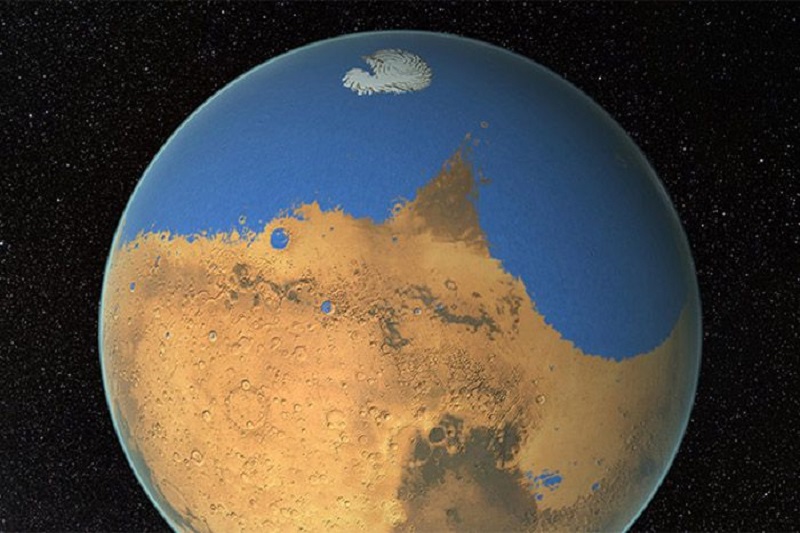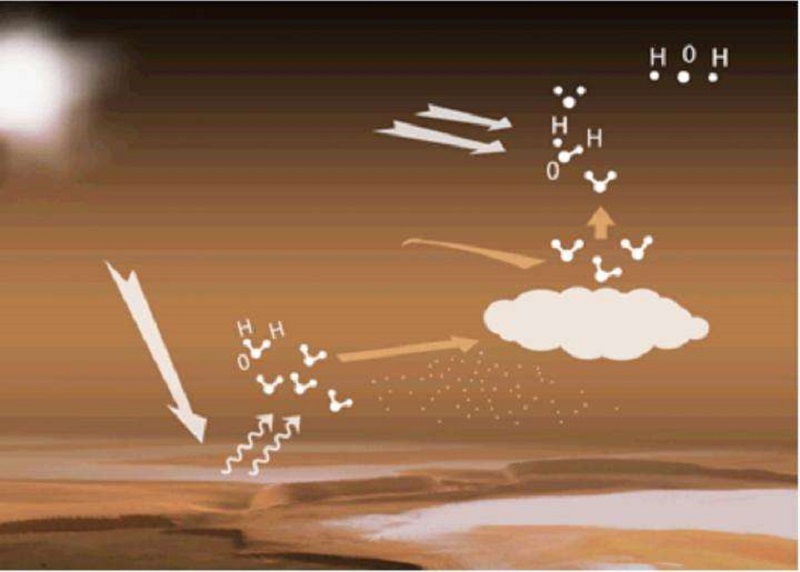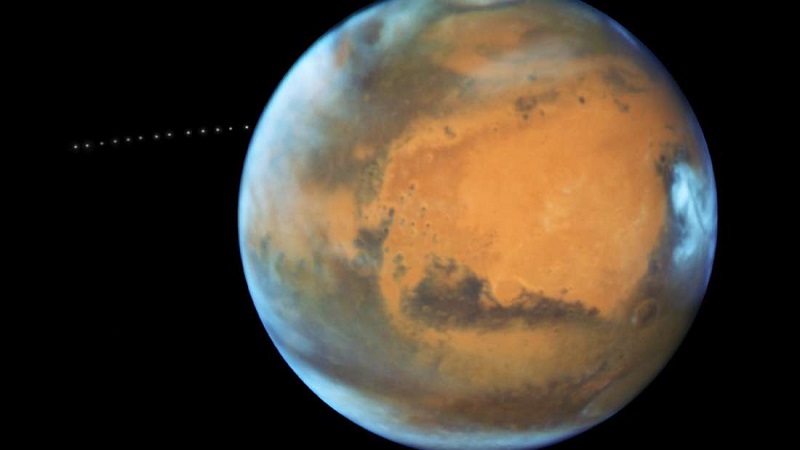New research suggests that water can disappear from Mars way faster than previously thought. This could explain why this planet turned now into a dry and dusty land of sand dunes.
The Trace Gas Orbiter is a collaborative mission between the European Space Agency (ESA) and Russia’s space agency Roscosmos. A team of French researchers used it to make shocking discoveries about Mars.
Water vapor is accumulating in large quantities

An international research team, led by Franck Montmessin, has just discovered that water vapor is accumulating in large quantities. It also has unexpected proportions at an altitude of over 80 km in Mars’ atmosphere.
“Scientists thought it took longer for water to get high into the atmosphere and dissociate into hydrogen atoms. In truth, this mechanism takes much less time: a few days to a few weeks,” said Franck Montmessin.
Measurements suggest that atmospheric pockets are supersaturated, the atmosphere including 10 to 100 times more water vapor than its temperature. The observed supersaturation rates show the capacity of water to escape would increase during certain seasons.
The impact of seasonal changes

As a matter of fact, vast amounts of water are being uplifted into the upper atmosphere of The Red Planet. Seasonal changes also have a huge impact on this situation. It seems more water escapes to the upper atmosphere in the warm and stormy periods.
So the water (H2O) disappears gradually sunlight and chemistry disassociate water molecules into hydrogen and oxygen atoms. Unfortunately, the weak gravity can not keep from happening the escape into space.
Still, the atmosphere on Mars is dry, holding around 10,000 times less water vapor than that of Earth. Almost all water on Mars nowadays exists as solid ice, but liquid salty water still flows intermittently on Mars.
The potential habitat for microorganisms

Another study from July 2018 suggested there could be a considerable lake of liquid water deep beneath the Martian surface. It reminds of the lakes discovered beneath the ice of Antarctica and Greenland on Earth.
The expectation of a large amount of liquid water is inciting as it could be a potential habitat for microbial life. Although there was no evidence of past or present life on Mars, there’s proof in another direction.
The surface of Mars once held substantial quantities of liquid water and could have been suitable for microorganisms. This new research explains partially how The Red Planet became so dry nowadays.











































